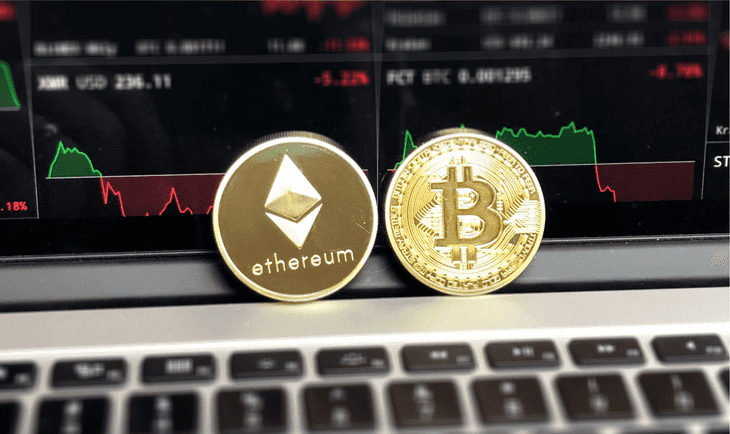
What is Slippage in Crypto?

What is Slippage in Crypto?
Slippage is a term used in the financial world to describe the difference between the expected price of a security and the actual price. This can be caused by a number of factors, including high volume or volatility in the market. In the world of Crypto, slippage can have a huge impact on your bottom line. In this article, we will explain what slippage is and how it can affect you as an investor.
What is slippage in crypto?
If you’re new to crypto, slippage can be a confusing concept. But it’s important to understand, because it can have a big impact on your trades. In this article, we’ll explain what slippage is and how it works in the world of cryptocurrency.
Slippage is the difference between the price you expect to pay for an asset and the actual price you pay. Slippage can happen when you’re buying or selling an asset, and it can be either positive or negative. Positive slippage happens when you buy an asset for less than you expected, while negative slippage happens when you sell an asset for less than you expected.
Slippage is a common occurrence in crypto trading, and it’s often caused by the volatile nature of cryptocurrency prices. When the market is moving quickly, it’s not uncommon for orders to fill at prices that are different from what was initially quoted. This is why it’s important to use a limit price order when trading crypto, so you can control the price at which your orders fill.
Why does slippage occur in crypto?
Slippage often occurs during periods of high market price volatility, or when there is low liquidity in the market. When slippage occurs, it can either be positive slippage or negative slippage. Either way the slippage tolerance will impact the price you trade the asset for vs your expected price.
There are a few reasons why slippage might occur in crypto markets:
-
The first reason is that crypto markets are relatively new and immature compared to other asset classes like stocks and commodities. This means that there is less liquidity in crypto markets, which can lead to more pronounced price movements and higher levels of slippage.
-
Another reason for slippage in crypto markets is the fact that prices are often denominated in fiat currencies like USD or EUR. This means that when fiat currency is in a volatile market, it can lead to increased levels of slippage in crypto markets.
-
Finally, another reason why slippage might occur in crypto markets is due to the use of leverage. Leverage can magnify both gains and losses, which can lead to more pronounced price movements and higher levels of slippage.
While slippage can be frustrating for traders, it is important to remember that it is a normal part of trading in any market. By understanding the causes of slippage and using proper risk management techniques, traders can minimise or sometimes avoid slippage and gain their expected price for the chosen asset.
Examples of slippage
When a trade is executed, the price at which it happens is called the "fill price". The fill price may be different from the trader's order price due to slippage, this often occurs when making market orders. Slippage occurs when the market moves away from the market order price before the trade can be executed. This can happen for a number of reasons, including:
-The market is moving quickly and there are not enough buyers or sellers at the market orders price to fill the trade.
-The trader's broker does not have enough liquidity to fill the trade at the order price.
-The trader is placing a large order and market makers are reluctant to take on all of the risk associated with filling it.
Slippage can have a significant impact on trading results, especially if the market is moving quickly. For example, let's say a trader places an order to buy 100 coins of XYZ crypto at $50 per coin. However, by the time the trade is executed, the price has risen to $51 per coin. The trader has experienced $1 slippage, unfortunately this slippage wasn’t in their favour.
Slippage can work in favour of the trader if the market moves in their favour before the trade can be executed. For example, let's say a trader places an order to sell 100 coins of XYZ crypto at $50 per coin. However, by the time the trade is executed, the price has risen to $51 per coin. The trader has experienced $1 slippage in their favour.
Slippage is an important factor to consider when trading, and can have a significant impact on trading results. Traders should always look to minimize slippage and look to perform a slippage calculation before placing any trades. Additionally they should be aware of the potential impact of slippage and factor it into their trading strategies.
Tips for minimising slippage in Crypto
When trading cryptocurrencies, there are a few things you can do to reduce or try to avoid slippage from occurring.
First, always set limit orders using your trading platform rather than a market order. This means that you will only buy or sell at a specific price, rather than a higher or lower price driven by market factors. It is important to note a limit order is the only way to eliminate slippage. By doing this, you avoid some of the price fluctuations that often happen in the cryptocurrency market.
Second, try to trade during periods of low volatility. This will help to ensure that your orders are filled at or near the price you want.
Third, use stop-loss orders when appropriate. A stop-loss order is an order to buy or sell a security when it reaches a certain price. This can help to limit your losses if the price of a cryptocurrency suddenly drops.
Fourth, be patient. Often, the best time to buy or sell a cryptocurrency is when there is no major news event affecting the market. By waiting for these periods of calm, you can avoid some of the volatility that often occurs in the cryptocurrency market.
Fifth, understand your entry and exit points. This will also help tremendously by reducing risk as much as possible.
Last, don't be afraid to use limit orders. They may take a bit longer to execute, but you'll be happy you did when your order is filled at or near the price you wanted.
By following these tips, you can help to reduce the amount of slippage that may occur when trading cryptocurrencies. However, it is important to remember that there is always some risk involved in any type of trading, and you should never invest more than you are willing to lose.
Additionally, if this all seems a bit too much, then you can just Dollar Cost Average with Bamboo, as we like to keep it simple!
What is Slippage Tolerance?
Slippage tolerance is the maximum amount that an order can move against the trader before it is cancelled. For example, if a trader places a buy order for BTC at $11,000 and sets their slippage tolerance to $100, the order will automatically cancel if the price of BTC moves to $11,100 or higher.
This feature is important for traders because it allows them to protect themselves from large price swings in the market. It is also important for exchanges because it prevents orders from being filled at prices that are far away from the original order price.
You will need to calculate slippage and understand how much you are prepared to accept. Often you can calculate a slippage percentage you will be happy to accept from your intended price of purchasing the chosen asset.
Final Thoughts:
Slippage is a natural part of the crypto market and should be expected by investors. By understanding how and why slippage occurs, investors can make more informed decisions about their investments. Slippage and crypto trading are high risk and are extremely complex. Fortunately Bamboo offers a simple solution that means you don’t have to worry about this.
FAQs
Does Slippage Matter In Crypto?
It depends. If you are a day trader or swing trader, slippage can eat into your profits. However, if you are a long-term investor, slippage is unlikely to have a significant impact on your investment.
Is High Slippage Good?
In regards to pure numbers, it isn’t great for your profitability having high slippage. As the slippage can eat away at your gains. It also adds more risk into a trade.
Disclaimer:
Please note: The above is not financial advice and cryptocurrency investing involves a high degree of risk. Please do your own research before making any investment decisions. Thank you for reading!

Crypto Jargon – The Phrases You Hear but Don’t Understand Explained!

How to Find Reliable Crypto Information

5 companies that changed their mind about Bitcoin.
The latest crypto news delivered straight to your inbox.
Subscribe to our newsletter




